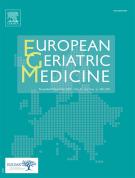The evidence for antiresorptive osteoporosis treatment in the elderly and old - 27/10/10
 , P. Vestergaard c, M.E.T. McMurdo d, P. Schwarz a, b
, P. Vestergaard c, M.E.T. McMurdo d, P. Schwarz a, bAbstract |
Purpose |
The mean age at diagnosis of osteoporosis is in the late 1960s, and fracture risk and need for fracture prevention rises sharply with increasing age. However, what is the evidence that supports the use of antiresorptive osteoporosis treatments in elderly people?
Methods |
This study was a meta-analysis and meta-regression of the published literature on the clinical efficacy of antiresorptive therapy in the reduction of fracture risk in elderly (age>70 years) and old (age>80 years). A systematic literature search was performed. Studies included were randomised placebo controlled trials of post-menopausal women or men where the primary endpoint was vertebral, non-vertebral or hip fracture risk reduction. No papers on fractures in males were published, so BMD as primary endpoint was accepted.
Results |
Thirteen studies in women were included. We found increasing vertebral fracture risk reduction with increasing age, increasing BMI, and longer duration of treatment. A high baseline BMD was associated with a lesser effect. For non-vertebral fracture risk reduction, we found no effect of follow-up, age or BMD. For hip fracture risk reduction, we found no effect of treatment with increasing age or BMD, and no certain effect of duration of treatment. For men, three BMD studies were included, in these, we found a non-significant trend toward fracture reduction.
Conclusions |
For women, pooled analyses showed increasing effect of antiresorptive drugs with increasing age, increasing BMI, and longer duration of treatment on vertebral fractures. The data on non-vertebral or hip fractures showed no effect on follow-up, age, or BMD. The data in men are scant at all sites and inconclusive.
Le texte complet de cet article est disponible en PDF.Keywords : Hip fracture risk, Non-vertebral fracture risk, Old, Osteoporosis, Vertebral fracture risk
Plan
Vol 1 - N° 5
P. 279-292 - octobre 2010 Retour au numéroBienvenue sur EM-consulte, la référence des professionnels de santé.
L’accès au texte intégral de cet article nécessite un abonnement.
Déjà abonné à cette revue ?

